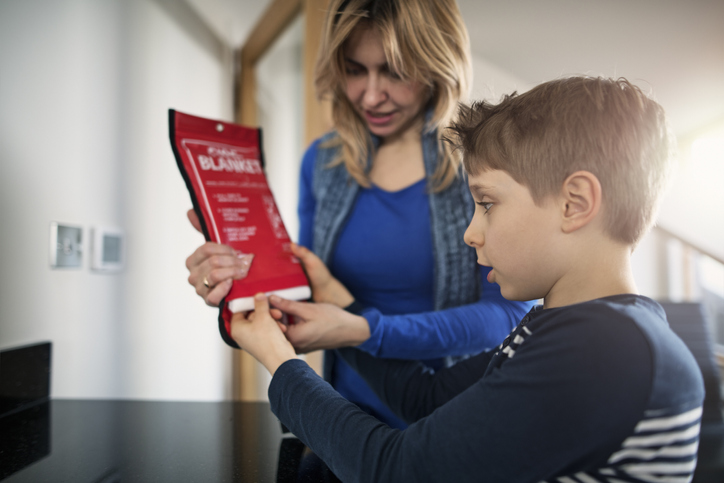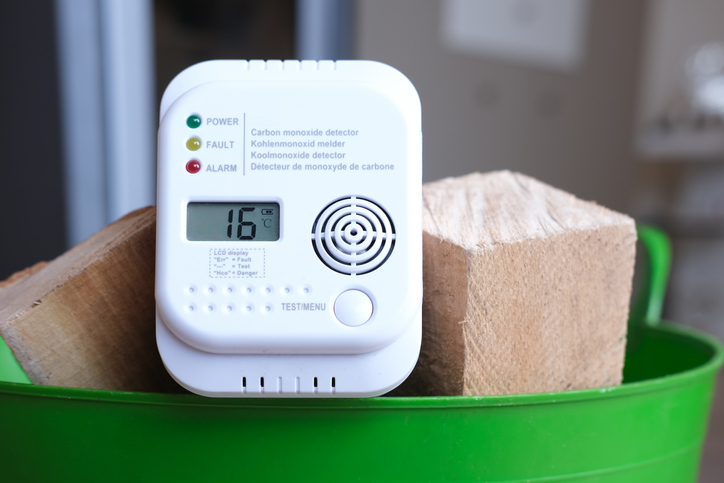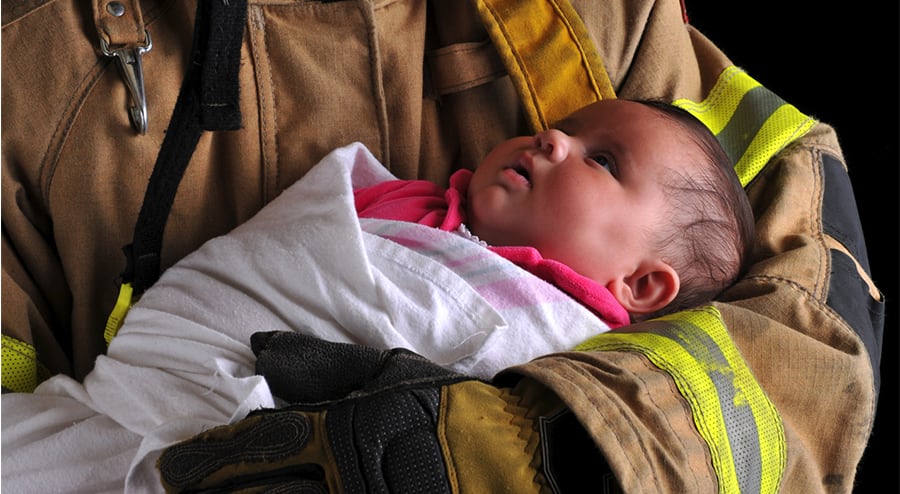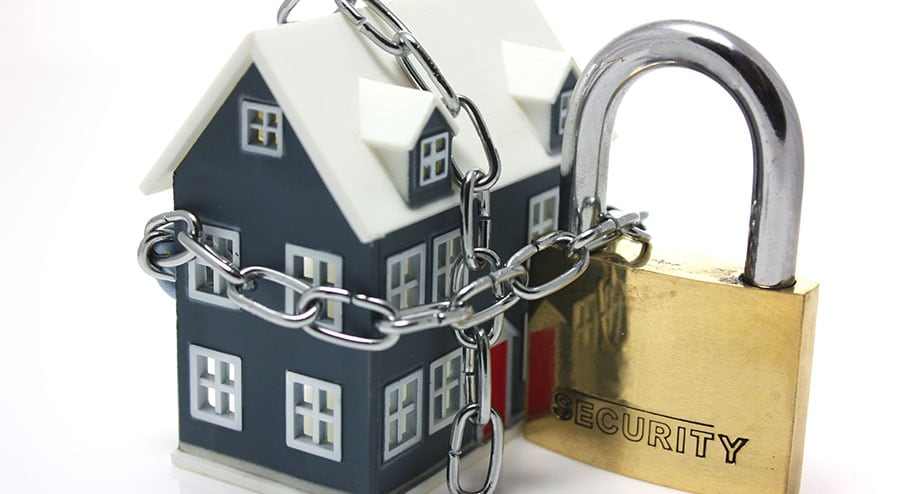In the comfort of our homes, the threat of a fire may seem distant, but the reality is that residential fires can have devastating consequences. Every year, countless lives are lost, and properties are destroyed due to fire incidents. Understanding the risks and taking proactive measures for fire prevention is not just a matter of caution; it’s a vital responsibility we owe to ourselves and our loved ones.

It is important to understand how to implement fire safety strategies and have the essential knowledge to safeguard your household from fire emergencies. Such strategies include identifying potential hazards, knowing proactive fire prevention measures, creating a comprehensive fire escape plan, childproofing the home, and safely handling flammable materials. Safety considerations for specific areas such as the kitchen, fireplace, electrical systems, and garages should also be considered. Additionally, it is important to have working smoke detectors and to choose the right fire extinguishers, as well as to educate family members about fire safety procedures and escape routes in order to reduce your risk of in-home fires.
Creating a secure living environment and knowing how to respond effectively in the event of a fire is essential in creating a safe environment for your home.
Understanding the Risks
Fires at home can originate from various sources such as electrical malfunctions which often result from overloaded circuits or faulty wiring. It is essential to have a certified electrician inspect the electrical system periodically and avoid using damaged cords or extension leads.
Another major risk is related to heating systems, particularly during the winter months. Portable heaters, if not used correctly or left unattended, can easily ignite nearby flammable materials. Proper placement and regular maintenance of heating appliances are essential safety measures.
Additionally, smoking indoors poses significant fire hazards if cigarettes are not discarded properly. The same caution applies to using candles and decorative lights, especially if they are left unattended or placed near flammable objects. To mitigate these risks, consider using flameless LED candles, which provide a similar ambiance without the fire hazard.
Investing in smoke detectors is an important way to increase safety at home. Brands like Kidde, First Alert, and Nest offer reliable and affordable smoke detectors, ranging from $20 to $50 per unit. These devices can detect smoke early and provide essential warning signals to occupants, allowing for a quicker response to potential fire incidents.
Understanding the risks associated with electrical systems, heating appliances, smoking, and decorative lighting allows for homeowners to take proactive steps to minimize fire hazards and ensure a safer living environment for their families.
Fire Prevention Measures
One of the first steps to prevent and significantly reduce the risk of fires and increase your home safety is to ensure you have working smoke detectors installed throughout your home. Brands like Kidde and First Alert offer reliable smoke detectors ranging from $20 to $50 per unit. Regularly test these devices and replace the batteries at least once a year.
Creating a comprehensive fire escape plan is a must for every household. Sit down with your family and discuss the escape routes from each room, identifying multiple exits whenever possible. Designate a meeting point outside the home to ensure everyone’s safety. Practicing fire drills regularly will help family members become familiar with the escape plan and respond swiftly in an emergency.
Childproofing the home is essential to reduce fire risks for families with young children. Install safety gates to keep children away from hazardous areas like the kitchen or fireplace. Keep matches, lighters, and other flammable materials out of reach, and teach children about fire safety at an early age.
Homeowners should understand how to safely handle and store flammable materials to prevent accidents. Store gasoline, kerosene, and other flammable liquids in approved containers in a cool, well-ventilated area away from living spaces. Invest in safety cabinets or containers like the Justrite Safety Can, ranging from $30 to $100, for secure storage.
Regularly check electrical outlets for overloading, as overloaded circuits can lead to electrical fires. Avoid plugging multiple appliances into the same outlet using extension cords or power strips, as this can strain the circuit. Consult a qualified electrician to inspect your home’s electrical system and address any issues promptly.
Be sure to safeguard against wildfires if you live in a fire-prone area. Create a defensible space around your home by clearing dry vegetation and debris from at least 30 feet around the property. Choose fire-resistant roofing materials like metal, tile, or Class A-rated asphalt shingles to reduce the risk of embers igniting the roof.
Implementing these fire prevention measures significantly enhance the safety of homeowners households and allows them to protect their loved ones and property from the devastating effects of fires.
Fire Safety in Specific Areas
It is important to understand how different areas are susceptible to fires. In assessing your house, you should consider assessing the safety of your kitchen, fireplaces, electrical systems, space heaters, dryer vents, and garage in order to minimize the fire risk they each pose.
Kitchen Safety
Kitchens are a common area where fires can start. Never leave cooking unattended, especially when using the stove or oven. Keep flammable items like kitchen towels, potholders, and curtains away from heat sources. In case of a stovetop fire, turn off the burner and cover the pan with a lid or a metal baking sheet. For oven fires, keep the door closed and turn off the heat. Use a fire extinguisher if the fire is small and manageable. Brands like Amerex and Kidde offer reliable kitchen fire extinguishers, ranging from $20 to $50.
Fireplace Safety
Fireplaces provide warmth and coziness during colder months but require responsible usage. Ensure the chimney is regularly inspected and cleaned by a professional to prevent creosote buildup, which can lead to chimney fires. Use a sturdy screen or glass doors to prevent embers from escaping the fireplace. Keep flammable materials like furniture and decorations at a safe distance. Avoid using accelerants like gasoline to start a fire, as it can quickly get out of control.
Electrical System Safety
Electrical fires are preventable with proper precautions. Schedule regular inspections by a licensed electrician to identify and fix any faulty wiring or overloaded circuits. Never overload electrical outlets with multiple appliances using extension cords or power strips. Replace damaged cords or plugs immediately and ensure that all outlets have proper cover plates. Brands like Leviton and Legrand offer a range of reliable electrical outlet covers starting at $1.
Space Heater Safety
Space heaters can pose fire risks if not used carefully. Keep space heaters at least three feet away from flammable objects, such as curtains and furniture. Never leave a space heater unattended, and be sure to turn it off before leaving the room or going to sleep. Consider using modern space heaters with safety features, such as tip-over protection and automatic shutoff. Brands like Lasko and Honeywell offer a variety of safe and efficient space heaters, ranging from $30 to $100.
Dryer Vent Safety
Proper maintenance of dryer vents is essential to prevent lint buildup and potential dryer fires. Clean the lint trap after every load and have the dryer vent professionally cleaned at least once a year. Avoid running the dryer without a lint filter, and ensure that the vent exhausts to the outside, not into an attic or crawl space.
Garage Safety
Many homeowners store flammable liquids, such as gasoline and paint, in the garage. Ensure that these materials are stored in approved containers and kept away from any ignition sources. Consider investing in a safety cabinet or storage container designed to hold flammable liquids securely. The Justrite Safety Can, starting at $30, is a reliable option for safe storage of flammable liquids.
By following these specific fire safety tips for different areas in your home, you can create a safer living environment and reduce the risk of fires in these commonly high-risk spaces. Taking precautionary measures and using the right products can make a significant difference in protecting your home and loved ones from potential fire incidents.
Fire Detection and Response
In the event of a fire, it is important to know how to respond. Ensuring that you have working smoke detectors is highly important in detecting a fire threat. However, knowing how to use your fire extinguisher, being aware of your escape routes, and being prepared with methods such as the “Stop, Drop, and Roll” technique are crucial in handling an active fire.
Importance of Working Smoke Detectors and Their Regular Testing
Smoke detectors are your first line of defense against fires at home. These devices are life-saving and can detect smoke early, providing critical warnings to occupants before a fire escalates. It is essential to have smoke detectors installed on every level of your home, including inside and outside sleeping areas. Regularly test the detectors by pressing the test button, and replace the batteries at least once a year, or as needed. Brands like Kidde and First Alert offer reliable smoke detectors ranging from $20 to $50 per unit.
Choosing and Using the Right Type of Fire Extinguishers Effectively
Fire extinguishers are tools that allow you to combat small fires before they spread. It is important to select the right type of extinguisher for the specific fire hazard. For home use, ABC fire extinguishers are the most versatile, as they can handle fires involving ordinary combustibles, flammable liquids, and electrical equipment. Ensure that the extinguisher is easily accessible and familiarize yourself with its proper usage. Remember the acronym “PASS” – Pull the pin, Aim at the base of the fire, Squeeze the handle, and Sweep from side to side when using the extinguisher.
The “Stop, Drop, and Roll” Technique for Clothing Fires
In the event your clothing catches fire, the “Stop, Drop, and Roll” technique can save your life. If your clothes are on fire, do not run. Instead, stop where you are, drop to the ground, and cover your face with your hands. Roll over and over to smother the flames. This action helps to prevent the fire from spreading and extinguishes the flames. It is essential to teach this technique to all family members, especially children, to ensure everyone knows how to respond in case of a clothing fire.
Informing Family Members About Fire Safety Procedures and Escape Routes
Being prepared during a fire emergency and ensuring that all family members are well-informed about fire safety procedures and escape routes is essential. Conduct regular family fire drills to practice the escape plan, ensuring everyone knows what to do and where to go in the event of a fire. Discuss the meeting point outside the home, and emphasize the importance of never re-entering the building once outside. By educating your family about fire safety, you empower them to respond effectively during a crisis and increase the chances of a safe evacuation.
Incorporating these fire detection and response strategies into your household’s safety practices will enhance your preparedness in case of a fire incident. Working smoke detectors, properly selected and maintained fire extinguishers, knowledge of the “Stop, Drop, and Roll” technique, and well-informed family members all play critical roles in reducing potential risks and ensuring a safer living environment.
Take Away
Fire safety is vital for every home. Implementing essential measures, understanding fire risks, creating an escape plan, and educating family members are crucial steps to ensure a secure living environment. Stay vigilant, empower yourself with knowledge, and make fire safety a top priority to protect your loved ones and property from potential fire incidents.




